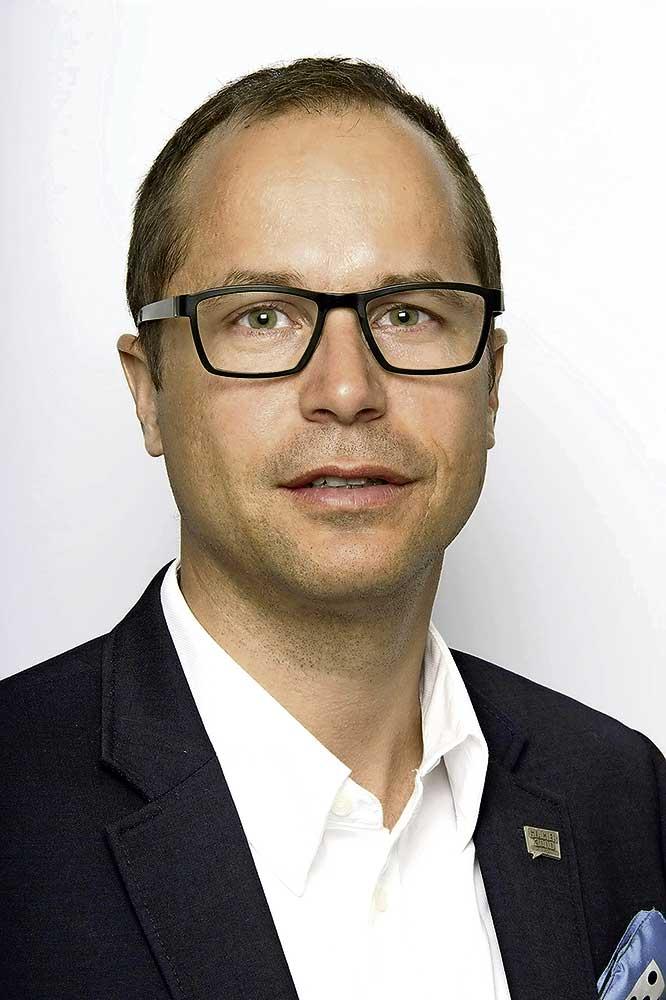Run!
17.08.2017 ProfileOn Saturday, 5 August, you arecelebrating the 10th anniversary of the Glacier 3000 Run. How and when was the event started?
I started working at Glacier 3000 after Marcel Bach and other investors bought it in 2005. One of our objectives was to promote summer tourism to this wonderful area; another was to find innovative ways to link it with Gstaad. So we came up with the idea of a race, the Glacier 3000 Run. Starting in Gstaad, the route introduces runners and their supporters to this spectacular mountain scenery and its dramatic changes as they climb from 1,000 to 3,000 metres.
What makes the Glacier 3000 Run special?
For me it’s special for a number of reasons. It’s a very challenging race, beginning at 1,050 metres in the village of Gstaad and ending at Glacier 3000, almost 3,000 metres above sea level. The course is 26km long and gains about 2,000 metres in altitude. The scenery all the way is superb and varied. The first part of the race follows the river valley to Gsteig, then it starts to rise. At Reusch the course becomes considerably steeper as the terrain changes from a forest track to an alpine hiking trail. The last part of the course takes place above the treeline on snow and glacial ice. Finally, at the top, runners are rewarded with breathtaking views of the Mont Blanc, the Matterhorn and the Jungfrau.
Runners can take part in the run either individually, or as a team of two runners doing a relay.
I understand that this year you are also organising an additional event.
Yes, to celebrate the 10th anniversary, we are including a full 42km marathon. It will be the most difficult marathon course in Switzerland and runners will have a total altitude gain of 2,750 metres.
What route will the marathon take?
Marathon runners will follow the traditional route of the Glacier 3000 Run up the valley as far as Feutersoey. There they will diverge from the route and climb up, first to the Lake Arnen and then on up to the Alp Seeberg. This is situated at 1,712 metres and has stunning views over the Lake Arnen. From there they will descend and join the traditional route again where they left it at Feutersoey.
Is it possible to participate if you are not as ultra-fit as these runners?
Yes. Those who prefer to hike can take part in the Alpine Nordic Walking Race. It starts at Oldenegg and ends at the Glacier 3000. The course is 6.2km and has an altitude gain of 1,041 metres.
How can families and friends follow the race?
Spectators are well taken care of. They have excellent opportunities to see the runners and cheer them on at five different points along the route. Special buses run from Gstaad to Gsteig and on to Reusch. From there they can take the ski lifts to Oldenegg and Cabane, and finally to Glacier 3000.
Is there any provision for families with children?
Each year we organise a fun run for children on the same day. The Gstaad Kids’ Run takes place in Gstaad on the Promenade at 3pm.
How many people are involved in the organization and how long does it take to organize the event?
The organizing committee is made up of seven people, mainly from Gstaad and the event takes almost a year to organise. As soon as the current year’s event is over in the summer, we hold a debriefing session to see what improvements we can make for the following year’s run. Then in the winter, in January, we start our preparatory meetings for the new year and begin marketing the event in February. Altogether it takes 10 months of the year to organize and wind up.
Is the Glacier 3000 Run becoming an international event?
Definitely, yes! This year we will have runners from more than 24 countries – not only from Europe but also Israel, Kuwait and Myanmar. In the past we have had winners from Kenya, the United Kingdom and the United States. The Glacier 3000 Run is also an important race on the Swiss calendar. The largest number of participants come from the German-speaking part of Switzerland, followed by those from the Swiss Romande, particularly Vaud. We also have many French and German participants.
How many runners participate in the traditional Glacier 3000 Run?
The first year we decided to limit the number of participants to 500 because we wanted to guarantee a first-rate experience for each runner. That event was sold out and, over subsequent years, we have gradually increased the numbers. Last year we had 800 participants. This year, with the marathon, we expect between 1,000 and 1,100 runners; this represents an increase of around 30%. Having said that, this type of event is very challenging so we have to limit the number of competitors. Mountain weather is changeable and we take security very seriously. This places constraints on the number of runners we can accommodate.
How many volunteers help with the event?
This year we have 260 volunteers, mostly from Gstaad and the Sannenland. The ratio of volunteers to runners is approximately 1 to 4.
Do you get support from the local community?
Yes, we are very fortunate to have the full support of the municipality and also several local companies sponsor the event. Without their help and the help of the local volunteers the event would not be possible – we are extremely grateful to them all.
One last question: how can people get more details?
We have a website that provides information for both runners and spectators in English, French and German. See http://glacier3000run.ch.
Bernhard, thank you for making the time to talk to GstaadLife. We wish you very good luck and hope the race is a great success.




